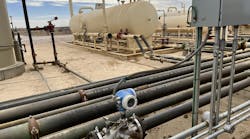U.S. demand for industrial valves is forecast to rise 3.2 percent annually through 2011 to more than $16 billion, a somewhat slower pace than the 2001-2006 timeframe, according to a study by Freedonia Group (www.freedoniagroup.com). Valve prices rose substantially from 2001-2006 due to rising raw material costs for primary and fabricated metals, as well as plastic resins. Freedonia says it expects raw material prices to moderate through 2011, reducing price pressure for valves. Original equipment demand comprises two-thirds of the total market and will be supported by a positive outlook for the production of durable goods, as well as nonresidential fixed investment.
Because of their heavy fluid handling requirements, the process industries and utilities sectors are the dominant markets for valves, according to Freedonia. The construction market is projected to see the fastest gains through 2011, with valve demand rising 5.7 percent annually. Gains in this market will be supported by an increase in nonresidential building construction expenditures. The public utilities market will also see fast gains, with valve demand rising 3.6 percent annually to $5.1 billion. Strong growth in utilities construction, particularly of power generation facilities, will fuel valve demand in this market. Steel and steel alloys will remain the dominant valve construction materials, owing to their good performance in high-temperature and high-stress applications, according to Freedonia. Due to their durability and versatility of application, steel and steel alloys accounted for 47 percent of all valve shipments in 2006. U.S. demand for industrial valves is forecast to rise 3.2 percent annually through 2011 to more than $16 billion. Trade will continue to play an important role in the valve industry, according to Freedonia. Through 2011, imports are expected to grow slightly faster than exports and the trade deficit will continue to rise, yet at a slower rate than during the 2001-2006 period. Imports will approach 60 percent of demand through 2011, while exports will represent 43 percent of shipments. Both imports and exports rose rapidly between 2001 and 2006 (with imports rising faster than exports), but both are expected to level off through 2011.

